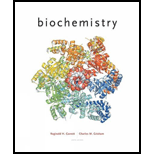
Concept explainers
Interpretation:
The physiological benefits and characteristics of each of the major class of hormones, such as polypeptide, steroid and amino acid-derived hormones need to be compared.
Concept Introduction :
Amino acids are organic compounds containing amino as well as acidic groups. The general molecular formula of an amino acid is as follows:
Here, R is different group for different amino acids. If there is more than one amino group present in an amino acid, they are considered as basic amino acids, and if there is more than one carboxylic group, then they are considered as acidic amino acids.
Answer to Problem 1P
Steroid hormones are the hormones, which control the gene expression. They help in controlling the metabolic processes, inflammatory processes. Some steroid hormones are responsible for maintaining osmolarity. The sex hormones are also steroid hormones; hence, they help in maintaining the sexual characteristics.
Polypeptide hormones include the largest class of hormones. They have insulin as a member.
The thyroid hormones regulate gene expression and include thyroxine and triiodothyronine.
Explanation of Solution
The main functions of steroid hormones are to regulate the
The hormones with the largest class are included in the polypeptide hormones and insulin is also a member. These hormones have three same characteristics:
- The synthesis of the secreted polypeptide hormone is achieved by using the single sequence.
- The synthesis of peptide hormone initially takes place by the formation of preprohormones which are further activated through proteolysis.
- The third common characteristics among all the polypeptide hormone is that, the number of dissimilar peptide hormones might be produced with single preprohormone.
There are two kinds of amino acid derivative hormones namely thyroid and catecholamine hormone. They are formed from tyrosine (amino acid) and function because of the creation of 2nd messenger. The surface receptors bind the catecholamine hormones which are comprised of epinephrine and norepinephrine. The thyroid hormones controls gene expression and contain triiodothyronine and thyroxine.
Want to see more full solutions like this?
- Which type of enzyme catalyses the following reaction? oxidoreductase, transferase, hydrolase, lyase, isomerase, or ligase.arrow_forward+NH+ CO₂ +P H₂N + ATP H₂N NH₂ +ADParrow_forwardWhich type of enzyme catalyses the following reaction? oxidoreductase, transferase, hydrolase, lyase, isomerase, or ligase.arrow_forward
- Which features of the curves in Figure 30-2 indicates that the enzyme is not consumed in the overall reaction? ES is lower in energy that E + S and EP is lower in energy than E + P. What does this tell you about the stability of ES versus E + S and EP versus E + P.arrow_forwardLooking at the figure 30-5 what intermolecular forces are present between the substrate and the enzyme and the substrate and cofactors.arrow_forwardprovide short answers to the followings Urgent!arrow_forward
- Pyruvate is accepted into the TCA cycle by a “feeder” reaction using the pyruvatedehydrogenase complex, resulting in acetyl-CoA and CO2. Provide a full mechanismfor this reaction utilizing the TPP cofactor. Include the roles of all cofactors.arrow_forwardB- Vitamins are converted readily into important metabolic cofactors. Deficiency inany one of them has serious side effects. a. The disease beriberi results from a vitamin B 1 (Thiamine) deficiency and ischaracterized by cardiac and neurological symptoms. One key diagnostic forthis disease is an increased level of pyruvate and α-ketoglutarate in thebloodstream. How does this vitamin deficiency lead to increased serumlevels of these factors? b. What would you expect the effect on the TCA intermediates for a patientsuffering from vitamin B 5 deficiency? c. What would you expect the effect on the TCA intermediates for a patientsuffering from vitamin B 2 /B 3 deficiency?arrow_forwardDraw the Krebs Cycle and show the entry points for the amino acids Alanine,Glutamic Acid, Asparagine, and Valine into the Krebs Cycle - (Draw the Mechanism). How many rounds of Krebs will be required to waste all Carbons of Glutamic Acidas CO2?arrow_forward
 BiochemistryBiochemistryISBN:9781305577206Author:Reginald H. Garrett, Charles M. GrishamPublisher:Cengage Learning
BiochemistryBiochemistryISBN:9781305577206Author:Reginald H. Garrett, Charles M. GrishamPublisher:Cengage Learning Biology: The Unity and Diversity of Life (MindTap...BiologyISBN:9781305073951Author:Cecie Starr, Ralph Taggart, Christine Evers, Lisa StarrPublisher:Cengage Learning
Biology: The Unity and Diversity of Life (MindTap...BiologyISBN:9781305073951Author:Cecie Starr, Ralph Taggart, Christine Evers, Lisa StarrPublisher:Cengage Learning Anatomy & PhysiologyBiologyISBN:9781938168130Author:Kelly A. Young, James A. Wise, Peter DeSaix, Dean H. Kruse, Brandon Poe, Eddie Johnson, Jody E. Johnson, Oksana Korol, J. Gordon Betts, Mark WomblePublisher:OpenStax College
Anatomy & PhysiologyBiologyISBN:9781938168130Author:Kelly A. Young, James A. Wise, Peter DeSaix, Dean H. Kruse, Brandon Poe, Eddie Johnson, Jody E. Johnson, Oksana Korol, J. Gordon Betts, Mark WomblePublisher:OpenStax College Biology 2eBiologyISBN:9781947172517Author:Matthew Douglas, Jung Choi, Mary Ann ClarkPublisher:OpenStax
Biology 2eBiologyISBN:9781947172517Author:Matthew Douglas, Jung Choi, Mary Ann ClarkPublisher:OpenStax Human Physiology: From Cells to Systems (MindTap ...BiologyISBN:9781285866932Author:Lauralee SherwoodPublisher:Cengage Learning
Human Physiology: From Cells to Systems (MindTap ...BiologyISBN:9781285866932Author:Lauralee SherwoodPublisher:Cengage Learning





